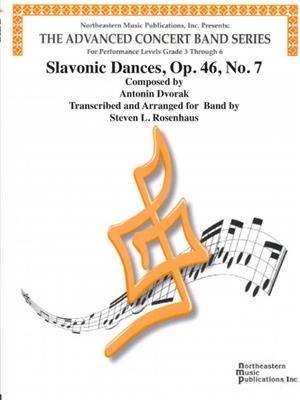Results
-
 £95.95
£95.95Slavonic Dances No. 7 op. 46 - Antonín Dvorák
This is a transcription of the famous Slavonic Dance of Dvorak. Such a pleasant melody and enjoyable composition. Steven Rosenhaus has stayed true to the original composition with no cuts or structural changes. The 1st trumpet's highest note is E.
Estimated dispatch 7-14 working days
-
 £68.80
£68.80Big Bass - Scott Rogers
Every beginning low brass player deserves a big bassline. With a rhythmic focus on quarter- and eighth notes and a range of a fourth, this piece is easily accessible for all beginning low brass players - and mastery breeds motivation, and that's something young musicians on trombone, baritone and tuba need.There is also a short chromatic motive that appears at B. This is written to lie well on the slide and valves and can be a good way to teach the important difference between concert E and Eb.
Estimated dispatch 7-14 working days
-
 £104.50
£104.50Honey Boys On Parade - Edward Victor Cupero
This is the best known of the many works written by E.V. "Honey Boy" Cupero during his successful career as a cornetist, band leader, music director, arranger, and composer. First published in 1914, it is a classic example of marches from this era, and it was very popular with American minstrels and circuses.
Estimated dispatch 7-14 working days
-
 £121.00
£121.00Holiday Rhapsody - Larry MacTaggart
Finally, a spectacular festive new work sure to be the musical highlight of the holiday season. Using familiar melodies associated with the holiday season, this brilliant new composition was written for the United Sates Air Force Band, Col. Lowell E. Graham, commander/conductor. An exciting selection that is a showcase for all sections of the band, it is sure to be a crowd pleaser.
Estimated dispatch 7-14 working days
-
£95.95
Fanfare: Generation Next - Zachary Cairns
Fanfare: Generation Next was written in honor of retiring director of Bands at Camp Hill Senior High School, Mr. Dean Zirkle. Spot the musical rendering of the name "DEAN" constructed with notes D, E, A, and "neighbor tone" for N. This bright and aurally
Estimated dispatch 7-14 working days
-
£72.95
Kinetic Energy - Larry Clark
Kinetic energy is defined as the energy of constant motion. Larry Clark represents this idea with a near constant 8th-note pulse throughout his supercharged piece. Though the piece ends in B flat major, the main idea is in the Lydian mode on E flat. Kinetic Energy is Clark at his most incisive and the scoring is apt and colorful.
Estimated dispatch 7-14 working days
-
 £72.95
£72.95Statue of Liberty March - Steven L. Rosenhaus
Ready for a march in 6/8 time? This is the song! It is an uplifting melody with contrasting sections. The audience will feel like marching. 1st trumpet's highest note is E flat. Only the 1st clarinests cross the break.
Estimated dispatch 7-14 working days
-
 £84.50
£84.50Achievement Unlocked - Amy Webb
Amy Webb has a way with nice flowing and exciting themes. This is a perfect example of her music. Easy and energetic are two words to describe the new work. Trumpets' highest note is E. Only the first clarinets cross the break.
Estimated dispatch 7-14 working days
-
 £78.95
£78.95And Hearts Shall Weep - Amy Webb
This is the song your audience will be talking about after the concert. It is an easy piece with beautiful harmonies and melodies. It is slow and not complicated. 1st trumpet's highest note is E. 3rd clarinets do not cross the break.
Estimated dispatch 7-14 working days
-
 £89.95
£89.95Harlee's High School March - John Curry Spikes
A high school march from the turn of the 20th century. A great tool for teaching your students how to play in cut-time. It is a typical style march with a trio in the middle. Only the first clarinets cross the break. 1st trumpet's highest note is E.
Estimated dispatch 7-14 working days
